- About us»
- Net income calculator»
- Population aging»
-
- Least developed regions»
-
- Average wage
- Material need benefits
- Meal allowance
- Counties of Slovakia
- Inflation
- Living and Subsistence Minimum
- Unemployment of Czechia and Slovakia
- NACE Classification
-
- Life expectancy
- Gender differences
- Youth unemployment and NEET
- Minimum wage in EU
- Unemployment rates of different age groups
- Share of salaries on GDP
- Employment rate
- Long term unemployment
- Unemployment rate
- Percentage of employees ususally working at nights
- NEET
-
- Bratislava and surroundings
- Kopanice
- Danube river
- lower Vah river
- middle Vár river
- upper Nitra river
- lower Nitra river
- Mining cities
- Kysuce a Orava
- upper Vah river - Liptov
- Spiš cities
- upper Hron river
- Juhoslovenská kotlina
- Košice fold and Torysa river
- upper Zemplín
- lower Zemplín
- EU regions
- NUTS3 regions of Slovakia
- LAU1 dataset
-
- Projects and activities
- Inclusive growth»
- Good work
- Project SKRS
- Social system – reality and vision
-
- Education of unemployed
- Young unemployed not taking part in education
- Proposal to change the system of education funding
- Library
- News»
- Contact
Aquitaine – FRI1
EU regions: France > Nouvelle-Aquitaine > Aquitaine
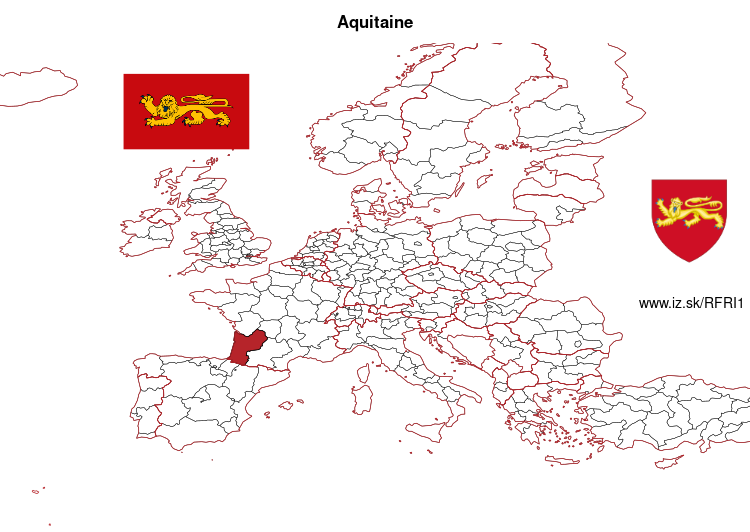
| Indicator | Period | Value |
|---|---|---|
| Life long learning | ||
| life long learning participation | 2024 | 17.8 |
| Part time jobs and flexible employment | ||
| percentage of part time workers | 2024 | 16.76 |
| percentage of part time workers, men | 2024 | 8.3 |
| percentage of part time workers, women | 2024 | 25.07 |
| Gender differences | ||
| gender gap in employment rate | 2024 | 96.64 |
| gender gap in unemployment rate | 2024 | 86.49 |
| Graduates and young people | ||
| unemployment rate of youth with elementary education | 2024 | 26.5 |
| NEET | 2024 | 8.7 |
| Gross domestic product | ||
| GDP per capita in PPS of EU average | 2023 | 86 |
| Employment | ||
| employment rate | 2024 | 73.2 |
More on wikipedia wikidata Q1179 on OpenStreetMap Aquitaine slovensky: FRI1
Subregions: Dordogne, Gironde, Landes, Lot-et-Garonne, Pyrénées-Atlantiques
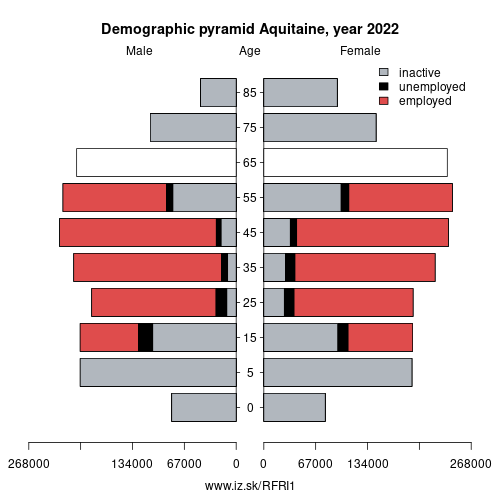
Unemployment
| Indicator | Period | Value |
|---|---|---|
| Unemployment | ||
| unemployment rate | 2024 | 7 |
| youth unemployment rate | 2024 | 16.3 |
| Long term unemployment | ||
| long term unemployment | 2024 | 1.3 |
| share of long term unemployed | 2024 | 19.1 |
Demographics
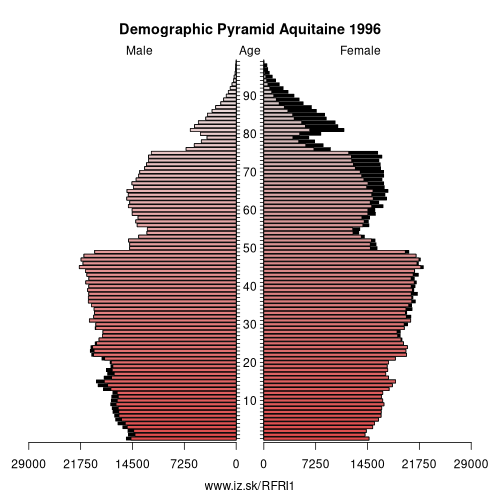
| Indicator | Period | Value |
|---|---|---|
| Demographics | ||
| number of inhabitants | 2024 | 3 600 009 |
| population density | 2023 | 86.8 |
| old-age dependency ratio | 2024 | 39.8 |
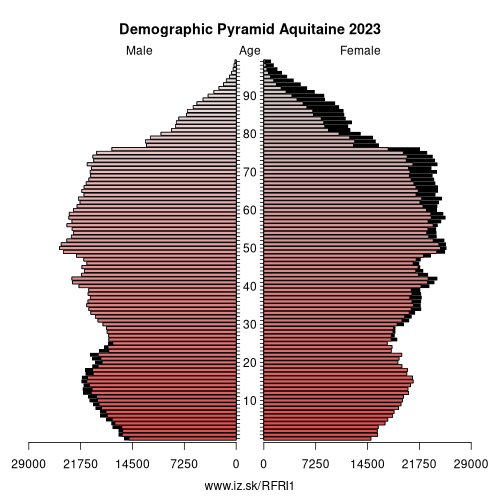
Employment by sectors, Aquitaine
| NACE r2 | % | NACE r2 | % | ||
|---|---|---|---|---|---|
| A | 39.4 | 2% | B-E | 183.3 | 11% |
| F | 104.2 | 6% | G-I | 372.6 | 23% |
| J | 42 | 3% | K | 45.5 | 3% |
| L | 27.4 | 2% | M_N | 174.6 | 11% |
| NRP | 30.1 | 2% | O-Q | 489.2 | 30% |
| R-U | 95.6 | 6% | TOTAL | 1604 | 100% |
Data for the period year 2024. Source of the data is Eurostat, table [lfst_r_lfe2en2].
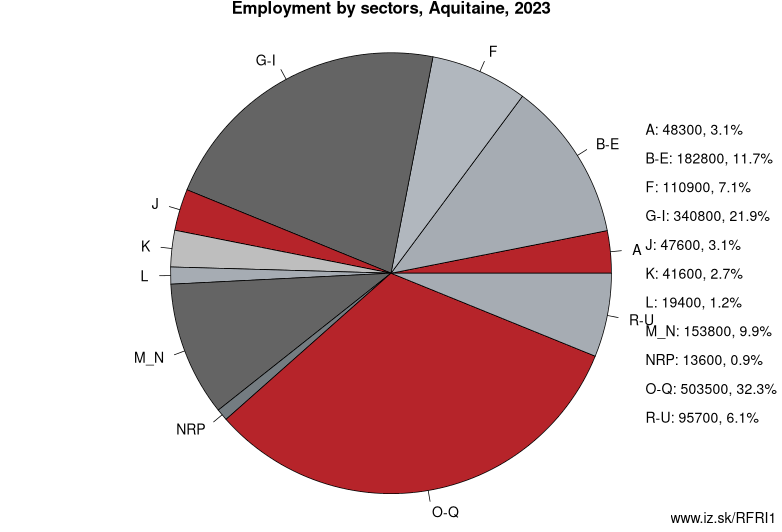
Aquitaine (UK: AK-wih-TAYN, US: AK-wit-ayn, French: [akitɛn] (listen); Occitan: Aquitània [akiˈtanjɔ]; Basque: Akitania; Poitevin-Saintongeais: Aguiéne), archaic Guyenne or Guienne (Occitan: Guiana), is a historical region of southwestern France and a former administrative region of the country. Since 1 January 2016 it has been part of the region of Nouvelle-Aquitaine. It is situated in the far southwest corner of Metropolitan France, along the Atlantic Ocean and the Pyrenees mountain range on the border with Spain. It is composed of the five departments of Dordogne, Lot-et-Garonne, Pyrénées-Atlantiques, Landes and Gironde. In the Middle Ages, Aquitaine was a kingdom and a duchy, whose boundaries fluctuated considerably.
History
Ancient history
There are traces of human settlement by prehistoric peoples, especially in the Périgord, but the earliest attested inhabitants in the south-west were the Aquitani, who were not considered Celtic people, but more akin to the Iberians (see Gallia Aquitania). Although a number of different languages and dialects were in use in the area during ancient times, it is most likely that the prevailing language of Aquitaine during the late pre-historic to Roman period was an early form of the Basque language. This has been demonstrated by various Aquitanian names and words that were recorded by the Romans, and which are currently easily readable as Basque. Whether this Aquitanian language (Proto-Basque) was a remnant of a Vasconic language group that once extended much farther, or it was generally limited to the Aquitaine/Basque region is not known. One reason the language of Aquitaine is important is because Basque is the last surviving non-Indo-European language in western Europe and it has had some effect on the languages around it, including Spanish and, to a lesser extent, French.
Other: Nouvelle-Aquitaine, Poitou-Charentes, Aquitaine, Limousin
Neighbours: Midi-Pyrénées, Poitou-Charentes, Aragon, Basque Autonomous Community, Navarre, Limousin
Subregions: Dordogne, Gironde, Landes, Lot-et-Garonne, Pyrénées-Atlantiques
Suggested citation: Michal Páleník: Europe and its regions in numbers - Aquitaine – FRI1, IZ Bratislava, retrieved from: https://www.iz.sk/PFRI1, ISBN: 978-80-970204-9-1, DOI:10.5281/zenodo.10200164

 Share
Share Facebook
Facebook Twitter
Twitter News
News